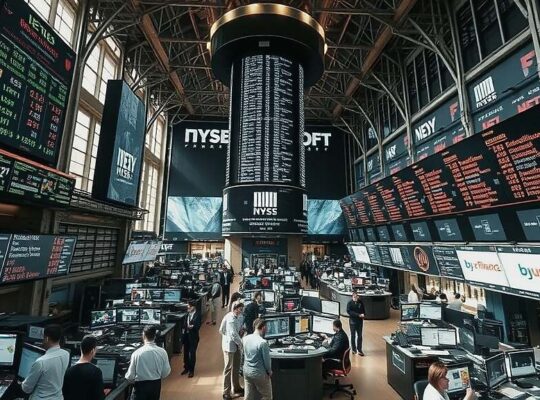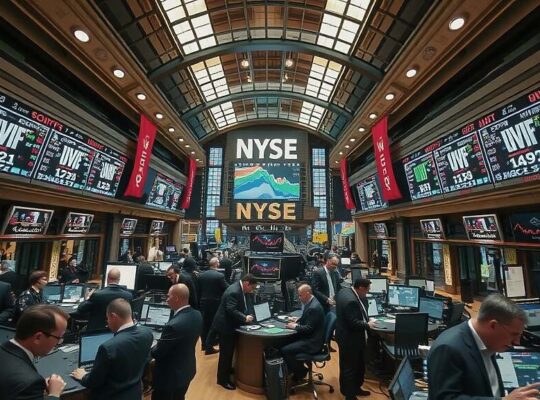Global markets displayed a cautious rebound Friday after an initial downturn, reflecting a complex interplay of profit-taking, macroeconomic adjustments and anticipation of key economic data. The German DAX index, despite a weak start, managed a slight recovery, trading around 23,130 points – a marginal decrease of 0.6% compared to the previous day’s close.
Analysts attribute the initial weakness to a wave of profit-taking following yesterday’s significant trading influences. Andreas Lipkow, a leading market analyst, observed that this period of consolidation appears to be nearing completion. The adjustments within the US macroeconomic landscape, particularly regarding inflation and interest rate expectations and a recalibration of valuations, especially within the technology sector, seem to have advanced considerably. Similar trends of stabilization were visible in Asian markets as the weekend approached. Notably, stocks previously experiencing losses during the week saw some recovery.
The focus now firmly rests on upcoming Purchasing Managers’ Indices (PMIs) from Germany, the Eurozone and the United States. Early indications from Australia and Japan presented a mildly positive outlook, largely in line with expectations. However, the relatively restrained performance of the DAX underscores the persistent anxieties surrounding the global economic outlook and the potential for further volatility.
The Euro weakened slightly against the US dollar, trading at $1.1518, reflecting broader concerns about the relative strength of the European economy. Gold prices also demonstrated a downward trend, slipping to $4,038 per fine ounce, a 1% decline, signalling a decreased appetite for safe-haven assets. Simultaneously, the price of Brent crude oil experienced a more pronounced drop, falling to $62.28 per barrel, a reduction of 1.7% from the previous day’s close. This decrease raises questions about ongoing energy demand and potentially reflects broader concerns about a slowdown in global economic growth, which could dampen industrial activity and curtail energy consumption. The interplay of these indicators highlights the delicate balance of investor sentiment and the potential for further market shifts in the days ahead.












